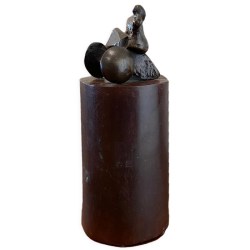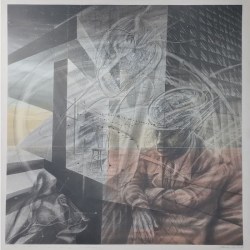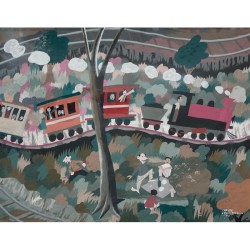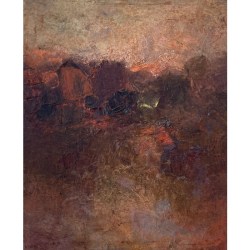Bio

Montevideo, Uruguay (1874-1949)
Joaquín Torres-García was born in Montevideo, Uruguay, in 1874. His family moved to Europe when he was a teenager. It would be forty-three years before he returned to Uruguay and changed the direction of Latin American art. He first studied art in Spain, where he also taught for the first time. In 1926, Torres-García met and befriended a number of avant-garde artists in France. This resulted in his experimentation with many modern artistic theories and movements. He eventually began to diverge from his peers in his feeling that industry was the enemy of creativity, and that art should be permanent and unchanging, not innovative and progressive.
When Torres-García developed his own theory of art, which he called Universalismo constructivo (Universal Constructivism), his desire was to found a truly Latin American art. He believed that art should incorporate human experience, and that geometry was the most effective and universal means to represent that experience. Focusing on what he called "spiritual geometry" rather than strictly mathematic geometry, Torres-García created a system of abstraction that incorporated symbols filled with personal and national history and meaning. He found that pre-Hispanic culture was, for him, rich in "spiritual geometry...which does not lie in knowing the physical, but the essential of everything."
When he finally returned to Uruguay in 1934, he was determined to create a school to advance Universal Constructivism. The result was El Taller Torres-García(the Torres-García studio), part of the School of the South, where artists worked collectively on murals, architecture, sculpture, and crafts, often in conjunction with writers, musicians, and performers.
Many of Torres-García's symbols and words are autobiographical in origin, and the Gallery's Abstract Art in Five Tones and Complementariesis typical of his style. The saw at the upper left refers to human production in general, and carpentry in particular; both his father and grandfather were carpenters. The stylized primitive pot on the right is one of his most commonly employed symbols. Often grouped with a hammer or compass, it refers to culture and labor. The hourglass form at the lower left is a sign for the intellect. The words in the painting announce his origins and priorities: MONTEVIDEO is his birthplace; ARTE ABSTRACTE the style in which he paints; SIGLO XX is the twentieth century; and his initials and the date of the work are also incorporated as design elements.







